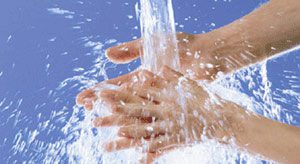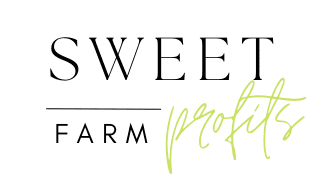The transition from harvest to the market is very crucial for farmers because so much can go wrong during the period. Being the final stages, the last thing you need is to get to the market with contaminated produce due to poor post harvest handling of perishable crops. This is bound to ruin not just your reputation but your customers’ health. Proper handling of your fresh produce can make that big of a difference.
Hygiene among workers
Human hands often carry dangerous bacteria on them which get transferred to your fresh fruits when your workers handle them.
The importance of keeping a worker’s hands clean during all stages of production and packing is importtant. It pays a key role in minimizing risks during post harvest handling of perishable crops.
In the packinghouse, provide convenient, well-maintained, and serviced restrooms. Here, your workers should have access to single-use paper towels, clean water, and soap dispensers.
Regularly take some time to educate your employees on the necessity of using the restroom and handwashing equipment properly. This way your people will be sensitized about using those facilities the right way. You should always wash your hands:
- After using the restrooms
- Coming from eating or smoking
- Before you begin or resume work
Other than washing hands regularly, you should always wear disposable gloves, face masks, hairnets when handling fresh produce. As the business owner, you want to provide these items for all your workers at all times.
Sick employees should not handle fresh produce. You can give them other roles or a day or two off till they feel better.
Keep the packing house clean
- Surface runoff and drift can sometimes carry polluted water into the packing house. Make sure your redirect such runoff especially from livestock units that might carry with fecal wastes.
- At the end of each day, wash, rinse, and sanitize the packing areas and floors.
- Use screens to keep birds and animals, especially rodents, out of the packing area.
- You should make it clear to your employees that they cannot smoke or eat in the packing areas. This is good for hygiene because their hands could get contaminated with bacteria and viruses when they touch their lips. To make it easy on them, you can have a separate break room where employees can eat, smoke, and keep personal belongings.
- Employees should be required to wash their hands before returning to work, taking a break, or using the restroom.
- Change from your field clothes to clean ones and an overcoat before getting into the packing house. This includes your boots and shoes too. You don’t want all that mud and bacteria to follow you into the packing house.
Washing practices
You need a washing routine, for the produce and the packing operation. This is to prevent contamination from pathogens.
- Water mixed with chlorine is good for washing produce. You can also use other disinfectants which have been approved by the EPA. For example, various formulations using sodium hypochlorite have can be used depending on the application.

- Additional restrictions or a more complete list of registered sanitizers can be found by contacting state regulatory bodies. You can find some commodity-specific chlorinated wash water guidelines in the chart below.
- When chlorine bleach (sodium hypochlorite) is added to wash water, measure it accurately. Chlorine sensitivity affects a variety of fruits and vegetables. In some cases, 200 parts per million of chlorine is enough to harm delicate food. Contact your local Cooperative Extension Service or commodities association for further information.[1]
- When the water becomes contaminated or after several hours of use, replace it.
- To check the level of chlorine in the sanitizer solution, you can use a sanitizer test kit or a swimming pool kit.
- You should remember to keep the pH between 6.0 and 7.0 because it is most active at that pH.
- Keep packaging supplies in a tidy location.
- Material Safety Data Sheets (MSDS) for cleaning and sanitizing products should be kept in an area where all employees can see them.
- Keep the wash water a little cooler than the produce because warmer water will ‘cook’ the produce and make them very tender.
- At the end of each day, wash, rinse, and sanitize the packing line belts, conveyors, and food contact surfaces to prevent the growth of hazardous germs.
Transportation to the market
Before you go to the market, there re a couple of things you should check on about your means of transport. Produce can get contamination from dirty cars because they carry pathogens on their surfaces.
- Ensure that the vehicles used for transportation are clean and sanitary.
- Ensure that your fresh fruits and vegetables are not transported in trucks that have previously transported live animals or hazardous materials. If there are no other options, make sure the vehicle is fully cleaned, rinsed, and sanitized before putting any produce into it.
- You should use refrigerated trucks whenever possible to transport produce.
Keep record for accountability
- Ascertain that you can track every package leaving the farm. You should have a record of the field each batch came from and the date it was packed. This is important when tracing any defects and informing the buyer on how fresh the produce is.
- For all packaged produce leaving the farm, records of lot numbers should be kept.
Summary
The key areas you should watch out for are hygiene among your employees, washing practices for the produce and the packing area, transportation vehicle hygiene and the records. You will have most of your contamination coming from these areas. Creating a system that appreciates these practises will remove all the worry from your part and the risk too.




